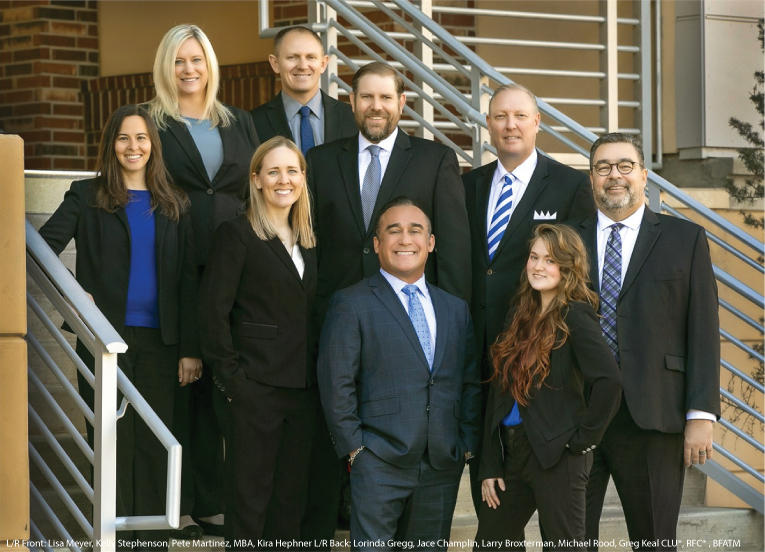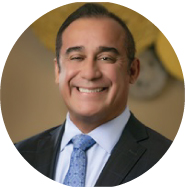The number of people in the U.S. age 100 or older last year was projected at 92,000, according to the Washington-based Population Research Bureau. That number has increased from around 32,000 in 1980 and 53,000 in 2010. PRB estimates the centenarian segment of the country’s population could increase to nearly 600,000 by 2060.
“Longevity will be an ongoing issue,” Pete A. Martinez, president and owner of Insight Financial Services, told Advisors Magazine in a recent interview. “People reaching 100 may well be the fastest growing age demographic in the country,” he added.
So, when Martinez and his team of nine, located in Overland Park, Kansas, talk with clients about retirement planning, they discuss the gorilla being in the room for possibly 100 years or more.
“We don’t like to plan for someone to live under 90 and for many clients we are planning until 100,” he added. “And we’re doing so because we learn they are healthy. We talk about health. We talk about family medical history. Their families may live long, and with medicine today we know they can live even longer,” Martinez explained.
“With couples we ask if one is healthier than the other,” he emphasized, which can help make decisions about long-term care planning needs.
Armed with information from the health side of the equation, Insight Financial Services is better equipped to provide realistic projections about retirement finances. The firm uses Monte Carlo simulation to evaluate the risk of running out of money in retirement.
Broadly, Monte Carlo simulations are used to model the probability of different outcomes in a process that cannot easily be predicted due to the intervention of random variables, according to Investopedia. It’s a technique used to understand the impact of risk and uncertainty in prediction and forecasting models.
Martinez and his team will typically run 1,000 iterations of a Monte Carlo simulation for a client’s portfolio to assess the probabilities of success or failure.
Start Early
Retirement planning is an ongoing, defined process at Insight Financial Services, where the typical client is 62 years old, according to Martinez. Retirement planning is not a one-off calculation left alone to run its course.
“And the sooner we start, the better,” he said. “I prefer to put a stake in the ground—say ten years out—and decide with the client how to work forward.”
At the very least, Martinez said the practice is to take a 36-month approach to getting a client prepared for retirement. When a client is 25-36 months away from retirement, spending habits are scrutinized. This is a time to get organized. “We look at where their income is really going,” he said. “Together, we evaluate all the likely sources of income, and we determine if retirement is feasible or if the client may need to think about downsizing their home or lifestyle.”
“We look at where their income is really going,” he said. “Together, we evaluate all the likely sources of income, and we determine if retirement is feasible or if the client may need to think about downsizing their home or lifestyle.”
Then, when a client is 13-24 months away from their retirement date, Martinez examines what else needs to be done if not fully organized, and they begin to prepare to live on the expected income.
“And then those last 12 months, we want you to live as though you were retired,” Martinez said. You know what your social security income is going to be, you know your pension, you know what you can get from retirement assets.”
In short, there is a specific number. And Martinez insists on ensuring that the client can live off that number.
“I’ve found, traditionally, that if you give them a number, they will work towards it,” he said. “Because of that, I have not had anyone that I have retired, in a very long time, have to return to work.”
That’s because, as Martinez explains, clients fully understood the consequences. They didn’t have any surprises later. No second-guessing if they miscalculated or mismanaged something. Going into retirement, everything was already laid out.
Tell the Truth
Any earnest discussion of health and income/spending habits must come from an honest place.
And Martinez, who served on active duty in the United States Air Force during the Gulf War, asks for two things from his clients: Be truthful and go see him.
“Tell me the truth,” he insisted. “I can’t help you if I don’t have all the information.”
Martinez, who holds a degree in finance as well as an MBA, notes that people may often be embarrassed about their credit card debt and don’t want to tell him about it. But the best laid plans will fall apart if such items are not accounted for, or if any actual spending habits remain secret.
“Come see me,” Martinez added. “Good times, bad times, indifferent times, I want to see you. We have to look each other in the eye to tell each other what’s going on in each other’s worlds so that I can plan for you effectively.”
And come, or contact, they do. Even pre-pandemic, Martinez says he would communicate with clients frequently, including at least one face-to-face meeting each year.
Also, if the firm is handling a couple’s financial matters, Martinez will not see one of them alone. This is because if something happens to one person in the relationship, the other must know that there is a plan in place. At the outset, however, Martinez makes a couple fill out a risk tolerance questionnaire independently—because their respective risk levels might be divergent, and then would need some alignment.
At the present time, Insight Financial Services has an investment minimum of about $250,000 – but it’s poised to increase, according to Martinez.
“For many years we took on a client at $100,000, but we were not a firm that could realistically take on less than that,” he said. “I see our minimum going to $500,000 in the next few years as our average client is considerably above that at this point already.”
RIA and an ETF Emphasis
Martinez founded the firm about 15 years ago, originally as a broker-dealer practice. But he then re-launched the company as a registered investment advisor (RIA).
In fact, the number of RIAs working in the U.S. has grown steadily during the last decade. Such advisors are registered with the U.S. Securities and Exchange Commission or a securities administrator of the state in which they practice. In 2020, the number of registered investment advisors reached 13,494, according to statistica.com.  “Being an RIA allows us to put everything in writing,” Martinez emphasized. “We demonstrate all fees—not only our fees but the expenses of holdings. We are primarily an ETF-strategy shop, so the average portfolio is going to be from 0.03% to 0.10% in internal expenses, which is very inexpensive.”
“Being an RIA allows us to put everything in writing,” Martinez emphasized. “We demonstrate all fees—not only our fees but the expenses of holdings. We are primarily an ETF-strategy shop, so the average portfolio is going to be from 0.03% to 0.10% in internal expenses, which is very inexpensive.”
When Insight Financial manages a client’s portfolio, all financial planning is included at no additional charge.
“We believe that to be good stewards of their money, we have to be able to understand the whole picture,” Martinez said. “You don’t invest in a vacuum. You invest based on your needs, your family’s needs, your income, your tax consequences and your risks.”
The firm prefers ETFs because Martinez sees them as considerably more tax efficient and lower cost than mutual funds. “And I like the ability that if I need to trade the ETF in an instant—a national disaster or the like—I can pull out of the market in the best interest of my clients,” he said.
“More often than not, the people coming to us are taking considerably more risk than they should,” he said, describing the practice as relatively conservative when it comes to investing. Insight Financial serves a wide range of clients in different states. Martinez describes his typical client as the ‘millionaire next door.’
For more information on Insight Financial Services, visit: ifsadvisors.com




